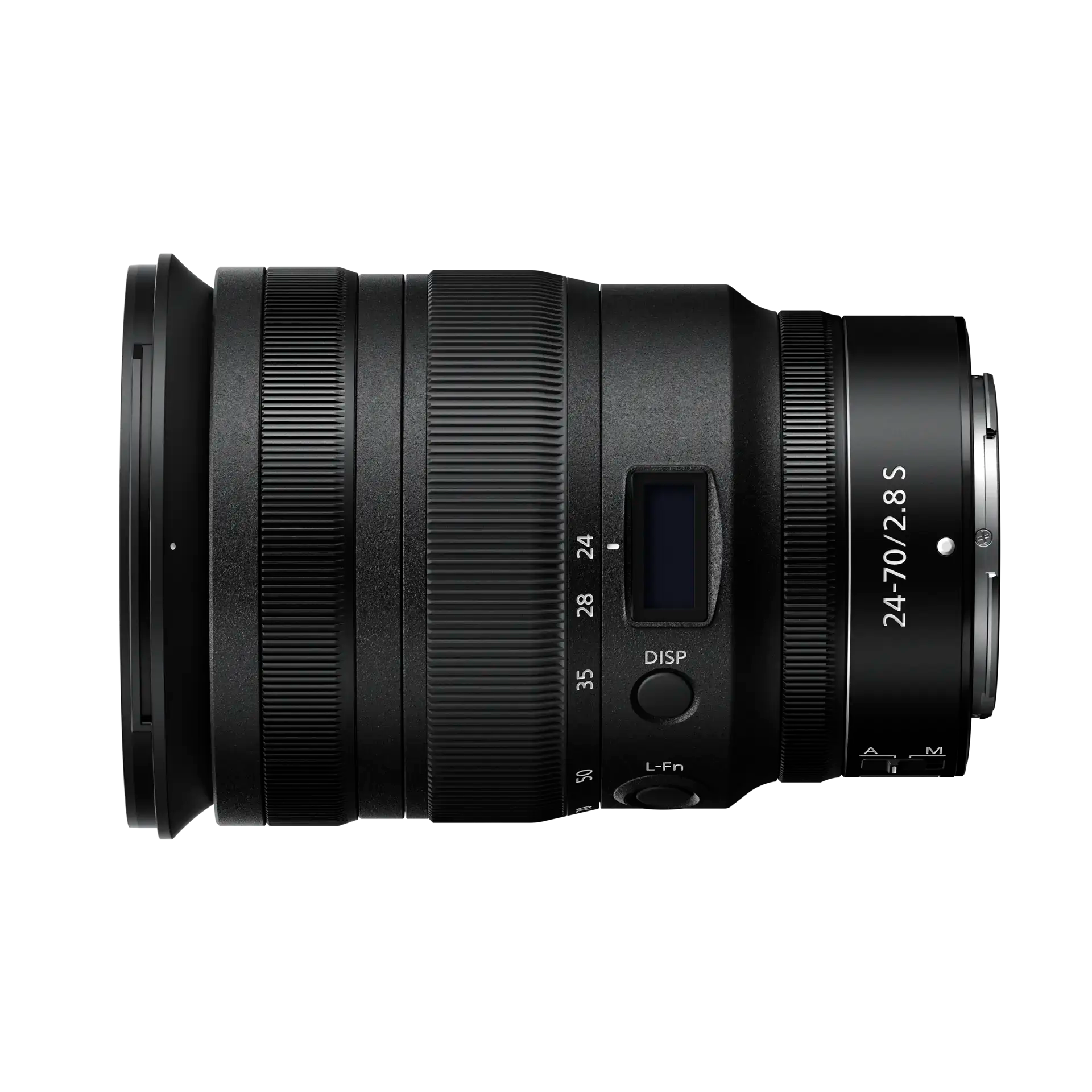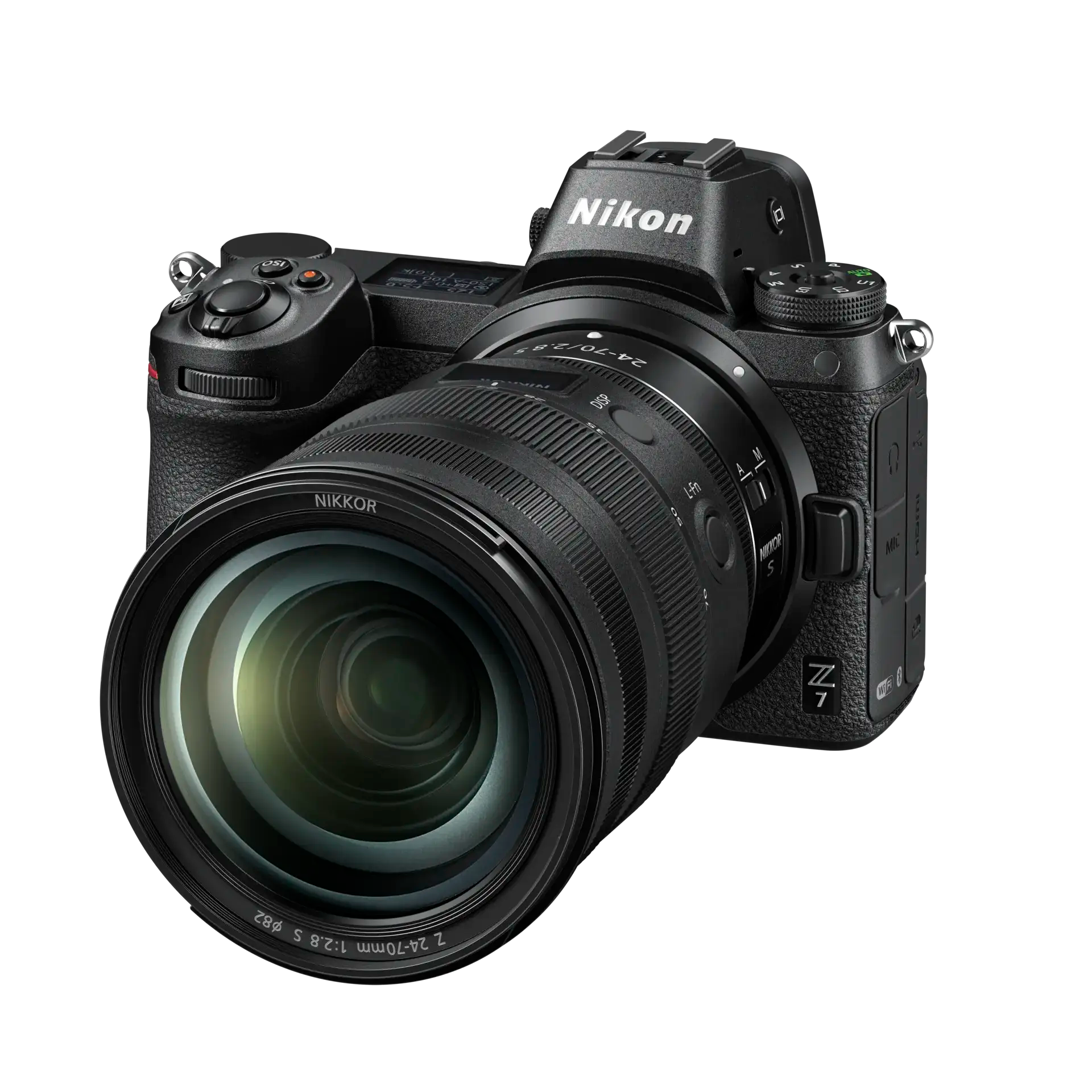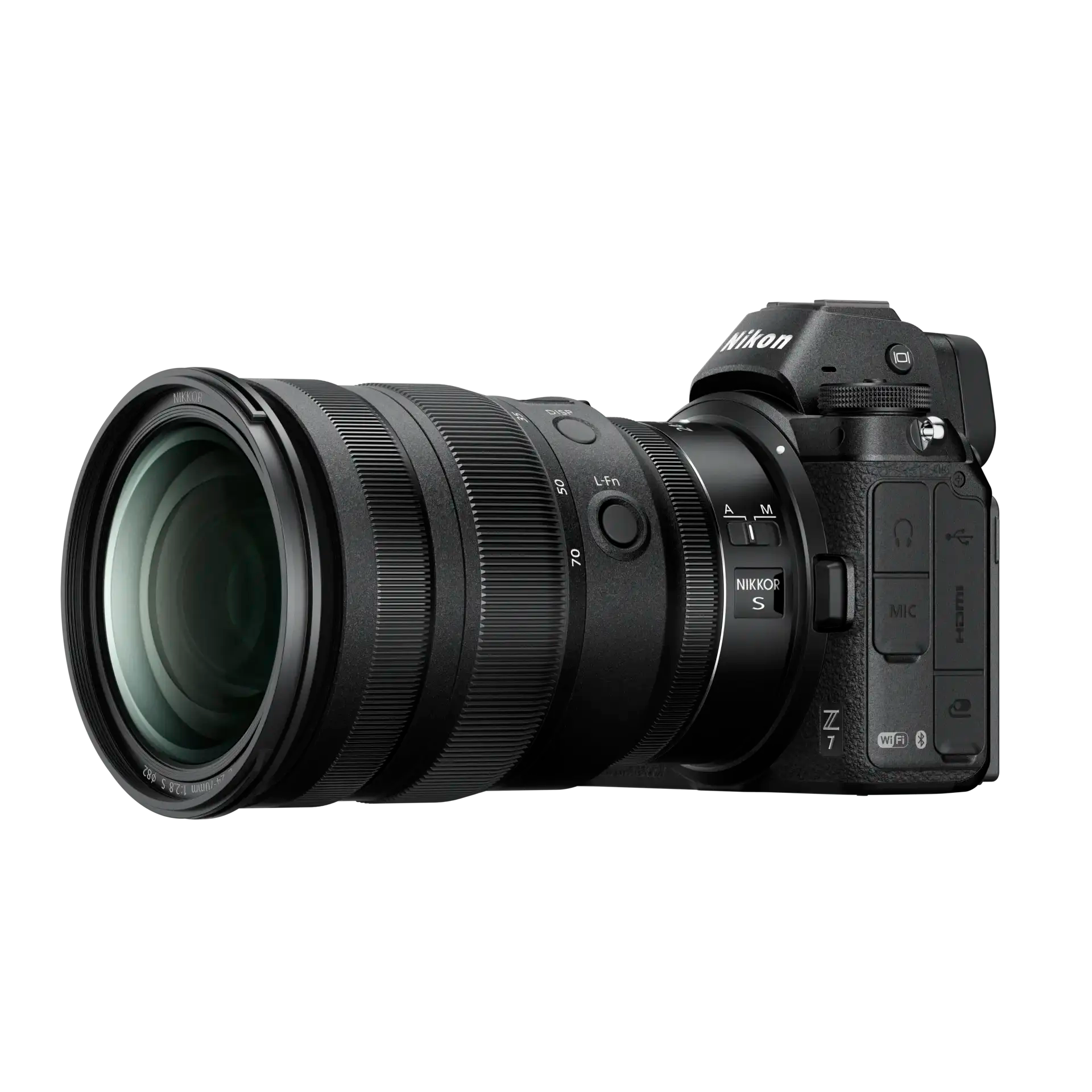Product Description
Nikon NIKKOR Z 24-70mm f/2.8 S Lens: The Ultimate Standard Zoom
The NIKKOR Z 24-70mm f/2.8 S from Nikon is a high-performance standard zoom lens that excels in a wide range of photographic applications, from wide-angle landscapes to portraiture. Featuring a constant f/2.8 maximum aperture, this lens is designed to perform exceptionally well in various lighting conditions and provides enhanced control over depth of field for creative focus effects.
Key Features at a Glance:
- Focal Length: 24-70mm (ideal for wide-angle to portrait-length shots)
- Maximum Aperture: Constant f/2.8 across the zoom range
- Lens Elements: Includes 2 extra-low dispersion (ED) elements and 4 aspherical elements
- Coatings: ARNEO, Nano Crystal, and Super Integrated Coatings to reduce flare and ghosting
- Autofocus System: Multi-focus system with two stepping motors for fast, quiet, and accurate focusing
- Manual Focus: Full-time manual focus override
- Control Features: Programmable control ring, OLED lens information panel, and assignable L.Fn button
- Build Quality: Dust and moisture-resistant design with a rounded nine-blade diaphragm

Exceptional Optical Performance
The NIKKOR Z 24-70mm f/2.8 S lens delivers outstanding image quality thanks to its advanced optical design. It features two extra-low dispersion (ED) elements and four aspherical elements, which effectively manage chromatic and spherical aberrations across the entire zoom range. This results in sharp, clear images with minimal colour fringing and distortion, making it an excellent choice for a variety of photographic scenarios.

Superior Coating Technology
To further enhance image quality, the lens incorporates ARNEO, Nano Crystal, and Super Integrated Coatings. These advanced coatings are designed to suppress flare, ghosting, and surface reflections, ensuring improved contrast and colour fidelity. The Nano Crystal Coat addresses incidental light from diagonal angles, while the ARNEO Coat manages light from vertical directions, providing consistent, accurate colours even in challenging lighting conditions.

Fast and Silent Autofocus
Equipped with a multi-focus system that utilises two stepping motors, the lens offers fast, precise, and quiet autofocus performance. This system is particularly beneficial for both still photography and video recording, allowing for smooth operation without disruptive noise. The lens also features full-time manual focus override, giving you the flexibility to make precise adjustments as needed.

Advanced Control Features
The lens is designed with user-friendly controls to enhance your shooting experience. The programmable control ring can be customised for manual focus, aperture control, or exposure compensation. Additionally, the integrated OLED lens information panel provides quick access to crucial settings such as aperture and focus distance, while the assignable L.Fn button offers seamless access to additional camera functions.

Durability and Build Quality
The dust and moisture-resistant construction ensures reliable performance in various environmental conditions, making it suitable for use in inclement weather. The rounded nine-blade diaphragm enhances the aesthetic quality of out-of-focus areas, contributing to pleasing background blur and effective shallow depth of field.

Versatile and Compatible
Designed for FX-format Z-mount mirrorless cameras, this lens covers a versatile 24-70mm focal length range, making it ideal for a wide range of photographic applications. Whether you're capturing landscapes, portraits, or architectural details, the NIKKOR Z 24-70mm f/2.8 S lens provides the performance and versatility needed to achieve exceptional results.

The NIKKOR Z 24-70mm f/2.8 S lens is a versatile and high-performing tool that excels in delivering sharp, clear images with advanced control and durability. Its constant f/2.8 aperture, combined with superior optical design and coatings, ensures reliable performance across a variety of shooting conditions, making it a valuable addition to any photographer's kit.

Payment & Security
Your payment information is processed securely. We do not store credit card details nor have access to your credit card information.























